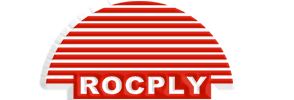ROCPLY plywood price and supply update
Global demand stays firm across construction and furniture. Buyers want stable panels and fair quotes, particularly when considering plywood price trends. They also need support on codes and documents. ROCPLY responds with open data and ready stock. We ship clean packs and keep labels precise. Your crews finish faster and with fewer issues.
We run mills with strict controls. Veneer grading follows set rules. Cores align to the target modulus. Glue lines meet audited limits. Finally, we pack for long routes. That chain keeps quality consistent.
Service sits beside quality. Our team aligns forecasts with your seasons. We share trigger points for surcharges. Clear steps protect margins when markets shift. Trust grows when numbers match reality.
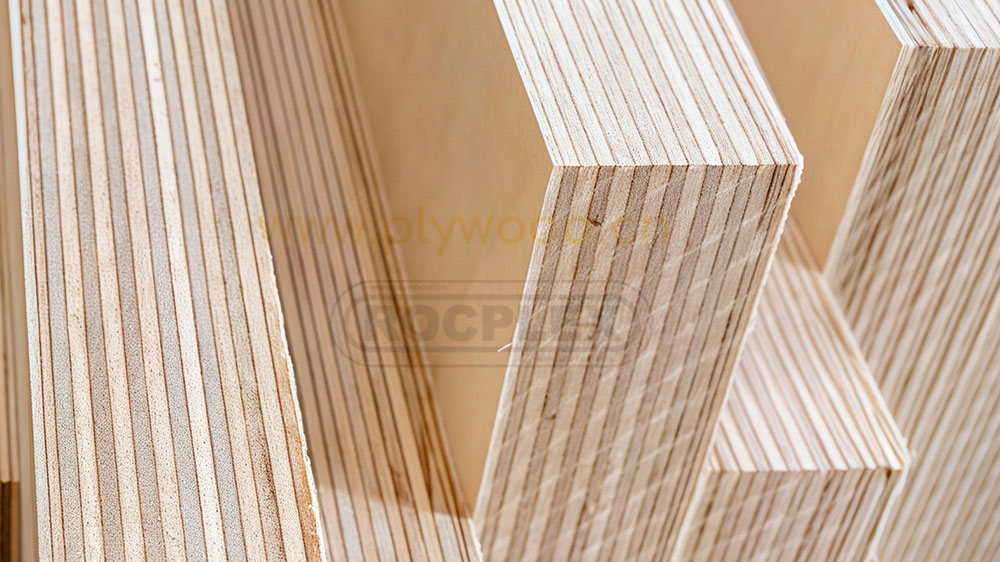
Plywood price checklist: the real cost drivers
Species moves the meter first. Dense cores raise stiffness and hold. Lighter cores cut mass and freight. Grade and face also matter. Premium faces need careful veneer and sanding. Utility faces carry a lower cost.
Glue class affects both price and use. MR suits dry rooms and cabinet parts. WBP phenolic supports wet zones and tough work. Emissions class may add a small step. E0 or E1 helps indoor air goals.
Sheet format shapes waste. Off-cuts cost time and money. The 4×8 plywood format reduces both in many shops. Local plywood sizes also help in metric markets. You save when cuts match plans.
Freight can swing quotes quickly. Fuel and exchange rates add noise. Lane length and free time affect landed cost. We model routes to show the real picture. That view helps you choose FOB or CIF with confidence.
Plywood price cost drivers snapshot
| Driver | Impact on plywood price |
| Species / core | Stiffness, weight, fastener grip, yield |
| Face grade | Finish quality, sanding time, defect allowance |
| Glue class | MR for dry rooms, WBP for exposure zones |
| Emissions class | E0/E1 options for indoor air targets |
| Sheet format | Waste reduction with 4×8 or metric sizes |
| Freight & surcharges | Fuel, currency, lane length, free time |
| Documentation | Customs speed, audit readiness, claim risk |
Grades, cores, and faces that change cost
Face grade sets finish work. B/BB sands smooth and paints clean. BB/CC handles linings and back panels. C/D suits crates and site barriers. Each step shifts plywood cost.
Core choice defines stiffness and weight. Poplar cuts easy and keeps mass low. Eucalyptus boosts strength and screw grip. Mixed cores balance price and performance. The right map saves money across the year.
Defect control protects yield. We control voids and patch use. Press cycles follow a narrow window. Edges stay square for faster layout. Time saved in the shop improves margin.
Plywood price per sheet vs per cubic comparisons
Per sheet quotes help retail and DIY. Per cubic quotes guide large orders. Both views matter in planning. Shops track yield by part count. Wholesalers measure turns by pack and lane.
ROCPLY quotes both views on request. You see how grade and species affect value. You also see how packing and documents move totals. That detail helps you explain pricing to your team.
Sheet formats and plywood sizes for less waste
The 4×8 plywood format anchors global trade. It stacks clean and loads fast. Stores display it with simple guides. Crews cut it with fewer off-cuts. Waste falls and jobs speed up.
Metric sheets support regional fit. 1220×2440 mm covers most export needs. 1250×2500 mm solves special layouts. We label both nominal and metric values. Yard teams pick the right pack the first time.
Custom cuts can save hours in plants. We rip or crosscut for volume runs. Labels show the custom size clearly. That precision reduces mix-ups and returns.
Glue class, emissions, and compliance that buyers trust
Glue must match the room and the risk. MR fits dry interiors and furniture parts. WBP phenolic supports decks and wet zones. We keep spread and press data for each batch. That file gives you confidence during audits.
Indoor air rules keep tightening. ROCPLY offers E0 plywood and E1 plywood options. Labels repeat the emissions class. Certificates travel with each load. Your clients see proof, not claims.
Chain-of-custody matters in many bids. We maintain robust tracking on inputs. Paperwork matches batch labels and packs. Customs moves faster when files are clean.
ROCPLY plywood price promise for wholesalers
We quote in clear tiers by grade and glue. Packing and document costs appear upfront. You compare like for like without guesswork. That structure supports honest deals.
Volume programs cut unit cost and risk. We set reorder points with real turns. Buffers protect peak months and large bids. You avoid rush freight and emergency swaps.
ROCPLY also helps with lane planning. We map free time and rate steps by port. You see how schedules hit the bottom line. Decisions get simpler with that view.
Supply planning that protects margin
Stock the right mix for your channel. Premium faces serve cabinet shops and retail tops. Utility lines cover linings and crates. Keep fast movers in higher stacks. Slow movers can share mixed packs.
We help with forecasts and safety stock. Data from prior seasons informs targets. Promotions and projects can adjust the plan. You keep service high with less dead space.
Labels matter more than many think. Clear codes and barcodes speed picks. Aisle-facing labels reduce errors. Pack counts by thickness save checks. These details save hours each week.
Plywood price and the total cost story
Sticker price draws attention. Total cost decides profit. Flat sheets cut rework and sanding. Smooth faces reduce primer and filler. Tight thickness control saves time at assembly.
Strong wrapping reduces damage in transit. Edge guards protect corners on lifts. Moisture control supports long voyages. Damage claims fall when packs arrive ready.
Returns cost more than money. They slow teams and hurt trust. Quality design and clear labels prevent most issues. The best price is the one that stays earned.
ROCPLY 4×8 format and logistics benefits
Freight density matters. Square stacks load fast and safe. Fork points mark clear lift zones. Straps hold during long sea lanes. Wraps resist tears and UV in the yard.
Arrival checks run faster with clean labels. Teams scan barcodes and confirm batches. Stores present stock in tidy blocks. Shoppers find the right plywood sheets without confusion.
We also align pack heights to racks. That choice speeds put-away and picks. Warehouse flow improves, and trucks clear sooner.
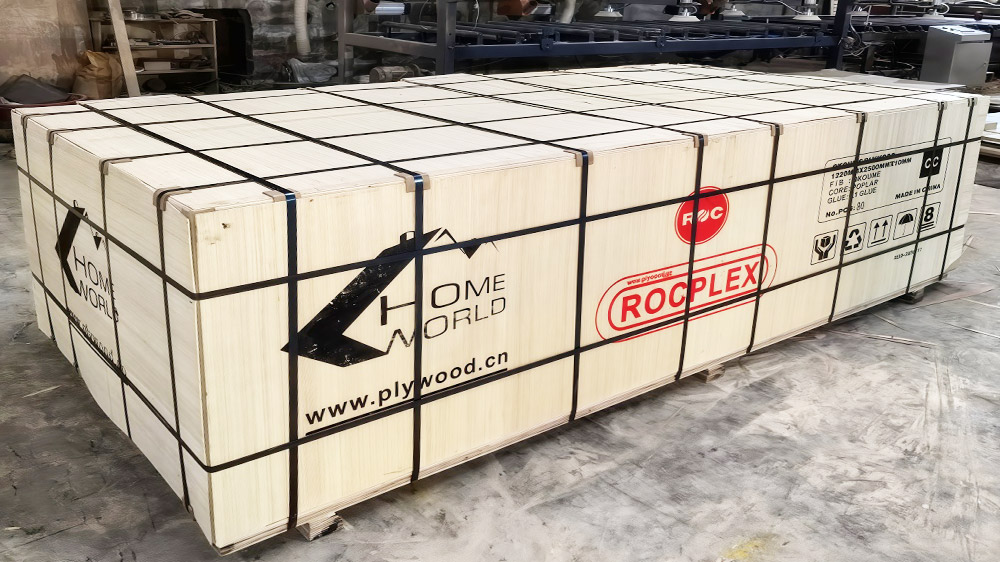
Plywood price models that fit real projects
Choose a model that mirrors your buying pattern. A per-sheet quote helps retail and DIY lanes. A per-cubic model suits container planning. Both views matter when margins feel tight. We share both formats on one file. Your team then compares value without confusion.
Lock base grades for steady items. Float species when supply shifts occur. Tie surcharges to clear triggers. Fuel, exchange, and lane changes sit on that list. You protect bids with simple math and fast updates.
Tier prices by face grade and glue class. B/BB earns a premium for paint work. BB/CC plywood supports linings at a sharper rate. MR glue suits dry rooms and cabinets. WBP phenolic wins in wet zones. Each choice maps to a different plywood cost.
Channel strategy for wholesalers and retailers
Serve each channel with the right mix. Wholesalers need depth in core sizes. Retailers need clean guides and shelf labels. Fabricators want consistent sanding behavior. Align the range and the message to each need. This approach lifts turns and reduces returns.
Keep plywood sheet options simple on the retail floor. Use three face tiers and two glue classes. Add clear icons for emissions class and use zone. DIY shoppers read fast and decide faster. Staff field fewer questions during rush hours.
Wholesalers want data, not slogans. Provide batch labels, test notes, and load photos. Add pallet counts for each thickness. Yard teams plan storage in minutes. Operations then run on schedule.
Sustainability that strengthens sales
Verified sourcing now wins bids. We maintain robust chain-of-custody controls. Audits track veneer, adhesive, and packing. You receive documents that pass checks. Clients feel safer with clear proof.
Air quality matters indoors. We offer E0 and E1 options across key lines. Labels repeat the rating on each pack. Certificates travel with the file set. Architects appreciate quick answers during submittals.
Sustainability reduces risk as well. Clean files speed customs and audits. Delays shrink when documents align with labels. The job starts on time and ends on time.
Documentation and compliance checklist
Start with a simple pack. Include invoice, packing list, and certificate set. Add emissions statements for E0 or E1. Attach glue class notes for MR or WBP. Provide species and origin statements as needed. Match batch numbers to pallet labels. Brokers clear files without extra calls.
Large projects may need more proof. We prepare bond test summaries on request. Span guidance appears where codes allow it. Photos show strapping, wrapping, and corner guards. The file answers common site questions in advance.
Store everything in a shared folder. Use one naming rule across orders. Teams then find documents in seconds. Audits feel routine, not stressful.
Logistics and pack optimization
Freight density shapes the final result. Square stacks load faster and safer. Fork points mark clear lift zones. Straps hold tension through long sea lanes. Wraps resist tears and UV during yard moves. These details protect stock and schedule.
Match pack height to racking. Taller packs reduce touches in busy yards. Shorter packs suit small stores and tight aisles. We build both on one lane plan. Crews handle freight with fewer delays.
Moisture control begins at the mill. We dry to target ranges before wrap. Desiccants help on long or humid routes. Arrival checks confirm condition and label integrity. Damage claims fall as process discipline improves.
Logistics and packing overview
| Item | Specification |
| Pallet pack count (12–19 mm) | Typically 30–50 sheets; custom heights available |
| Wrapping | Tear-resistant film with edge guards |
| Straps | High-tensile PET or steel as required |
| Labels | Barcode, batch, grade, thickness; aisle-facing |
| Moisture control | Target drying plus desiccant on request |
| Forklift handling | Marked lift points and clearances |
Training and sales enablement
Equip teams with quick guides. One page explains grades, glue, and uses. Another maps plywood sizes to common cuts. Staff answer most questions on the spot. Managers handle fewer escalations.
Create short demo kits for stores. Show face grades side by side. Add a cut sample of each core. Shoppers feel the difference in seconds. Conversion rates rise with honest displays.Technical support runs deeper for trade clients. We share bond data and process notes. Submittal packs arrive ready for review. Engineers receive the detail they expect. Jobs move without last-minute changes.
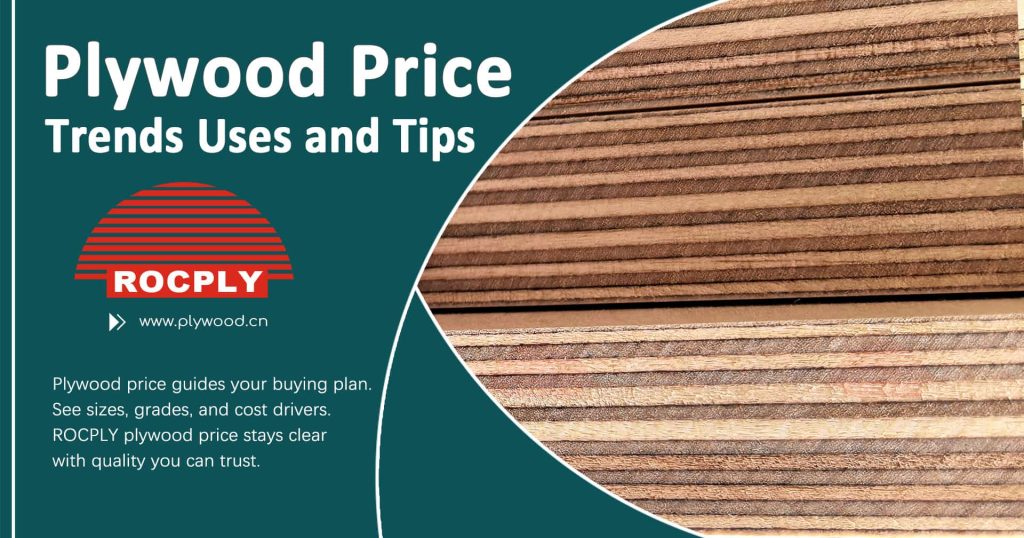
Plywood price and total cost control
Sticker price draws clicks. Total cost drives profit. Flat panels cut sanding and shimming. Smooth faces shorten primer time. Accurate thickness speeds assembly. Every minute saved adds margin.
Protect yield with quality packing. Edge guards reduce forklift dings. Tear-resistant wrap survives long moves. Aisle-facing labels speed picks. These details pay off every day.
Model routes before booking. FOB may help when you control freight. CIF may help when lanes feel tight. Compare free time, surcharges, and roll risk. Choose the option that protects deadlines.
Case examples of cost and value
A Southeast Asia distributor built tiered assortments. Premium faces targeted cabinet shops. Utility boards served site linings. Returns fell while margins rose. Forecast accuracy improved with rolling orders.
An Oceania retailer needed faster checks. We aligned SKUs and barcodes to their ERP. Yard picks sped up by minutes per pack. Mis-shipments dropped sharply. Reviews turned positive within one quarter.
A furniture plant chased smoother finishing. We specified birch faces with a poplar core. Sanding time fell and output rose. Edges stayed crisp across shifts. Unit cost dropped without quality trade-offs.
Frequently asked pricing questions
Can I stabilize costs across a quarter?
Yes, with forecasts and realistic buffers. Share windows and target volumes. We align lanes and reduce surprises.
How do I compare quotes fairly?
Match face grade, core, glue, and emissions. Then compare the number. The best value becomes obvious.
What drives sudden jumps?
Fuel, exchange, and vessel space. Species demand can also move fast. We share triggers early for planning.
Should I switch sizes to cut waste?
Sometimes. The 4×8 plywood format often reduces off-cuts. Custom cuts can finish the job in plants.
How does ROCPLY keep sheets consistent?
We control veneer grading, adhesive spread, and press cycles. Batch data supports traceability and swift fixes.
Get a clear plywood price quote and lead time
Plan your next order with confidence. Share your forecast and target lanes. We will map sizes, grades, and file needs. Then we will quote a transparent plywood price and timeline. ROCPLY will ship clean packs that keep your schedule on track.
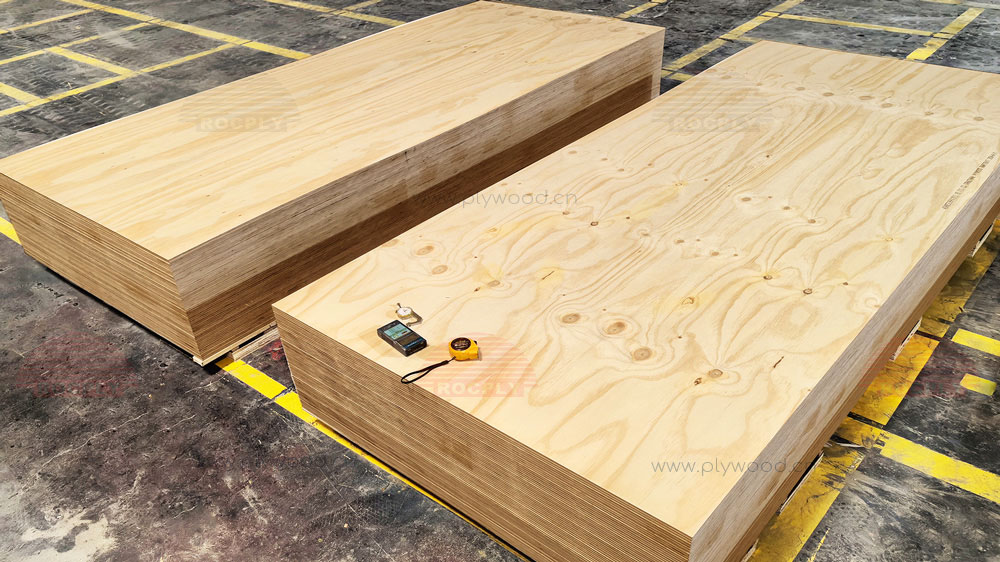
Plywood
ROCPLY, a trusted name in the construction materials market, is proud to announce the launch of their new line of high-quality ply wood solutions. Designed to meet the diverse needs of the industry, ROCPLY now offers an extensive range of ply options, including structural, birch, marine, and MR plywood.
ROCPLY Plywood Superior Quality and Durability:
ROCPLY ply solutions are meticulously crafted to deliver superior quality and durability. The structural ply offers exceptional strength and stability, making it ideal for applications that require reliable load-bearing capabilities. Birch ply wood, known for its fine grain and consistent thickness, provides versatility and aesthetic appeal. The marine ply wood is specially treated to withstand moisture and weather conditions, making it perfect for marine and outdoor projects. Lastly, the MR ply wood offers moisture resistance, making it suitable for interior applications where protection against humidity is essential.
ROCPLY Plywood Wide Range of Applications:
ROCPLY ply wood products cater to various industries and applications. The structural ply is widely used in commercial and residential construction projects, including flooring, roofing, and formwork. Birch plywood is sought after by architects and designers for its versatility in furniture making, cabinetry, and interior fittings. Marine plywood is a top choice for boat building, docks, and other water-related structures due to its water-resistant properties. MR plywood finds applications in indoor furniture, cabinets, and decorative purposes, offering both functionality and style.
ROCPLY Plywood Commitment to Quality and Sustainability:
ROCPLY is committed to delivering ply wood solutions that not only meet high-quality standards but also adhere to sustainable practices. Their ply is sourced from responsibly managed forests, ensuring a minimal impact on the environment. With ROCPLY’s plywood options, builders and architects can confidently create sustainable and eco-friendly structures without compromising on performance.
We are thrilled to introduce our new line of ply wood solutions. At ROCPLY, we strive to provide our customers with the finest quality materials that meet their specific requirements. With our range of structural, birch, marine, and MR plywood, we aim to empower builders, architects, and craftsmen to bring their visions to life.
For more information about ROCPLY’s plywood solutions and to request samples, please visit [website] or contact [contact details].
About ROCPLY Plywood:
ROCPLY is a leading brand in the construction materials industry, known for delivering high-quality products to wholesalers, builders, and contractors. With a commitment to innovation, sustainability, and customer satisfaction, ROCPLY offers a wide range of construction timber material.
Post time: Nov-04-2025
